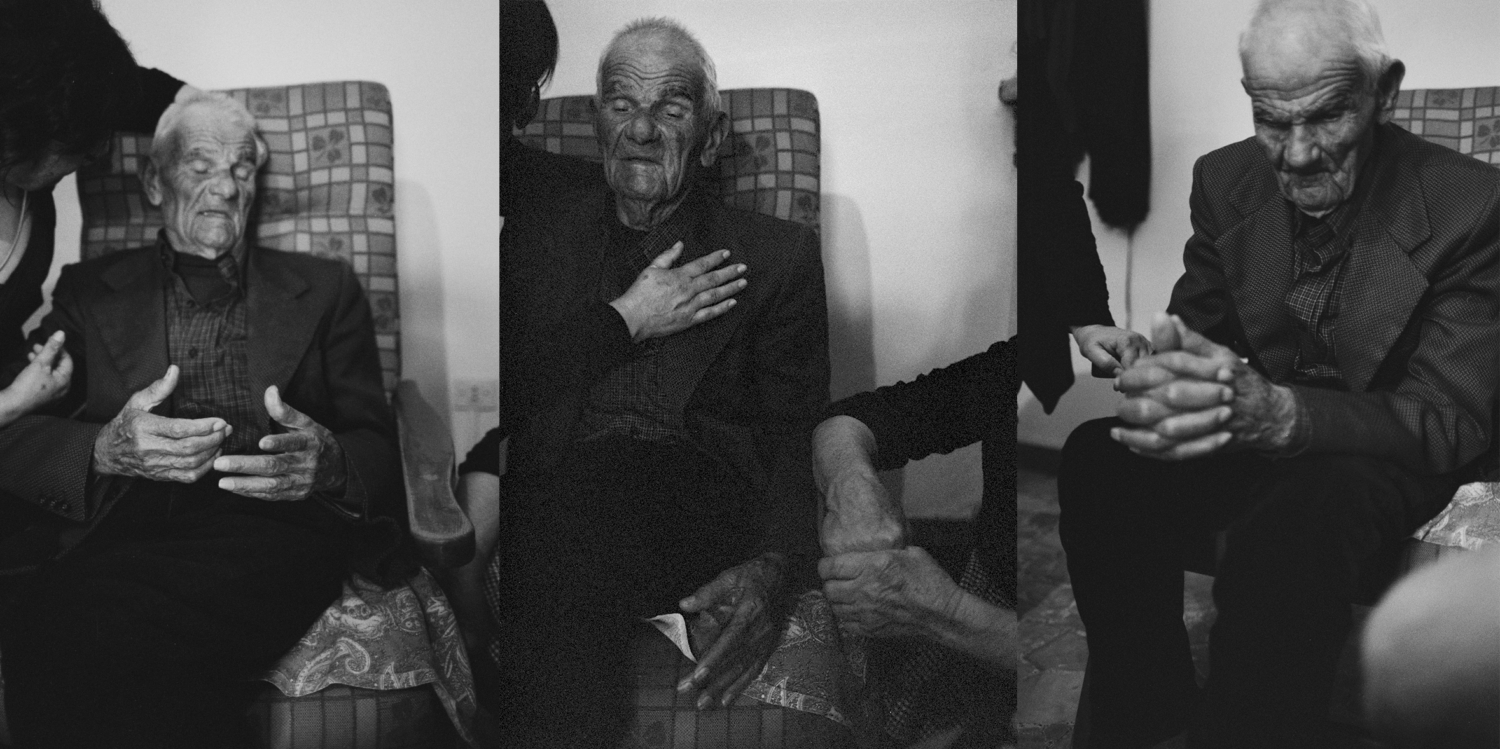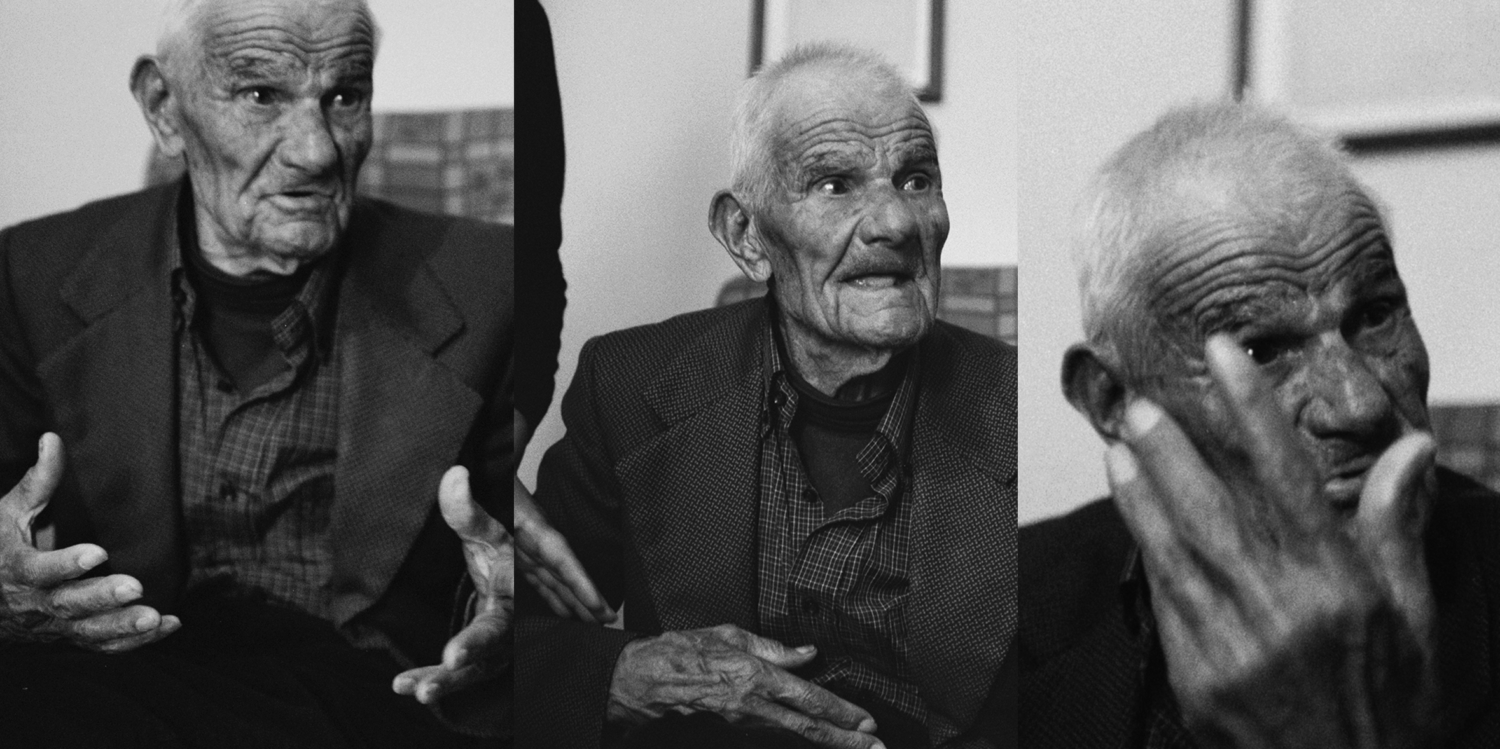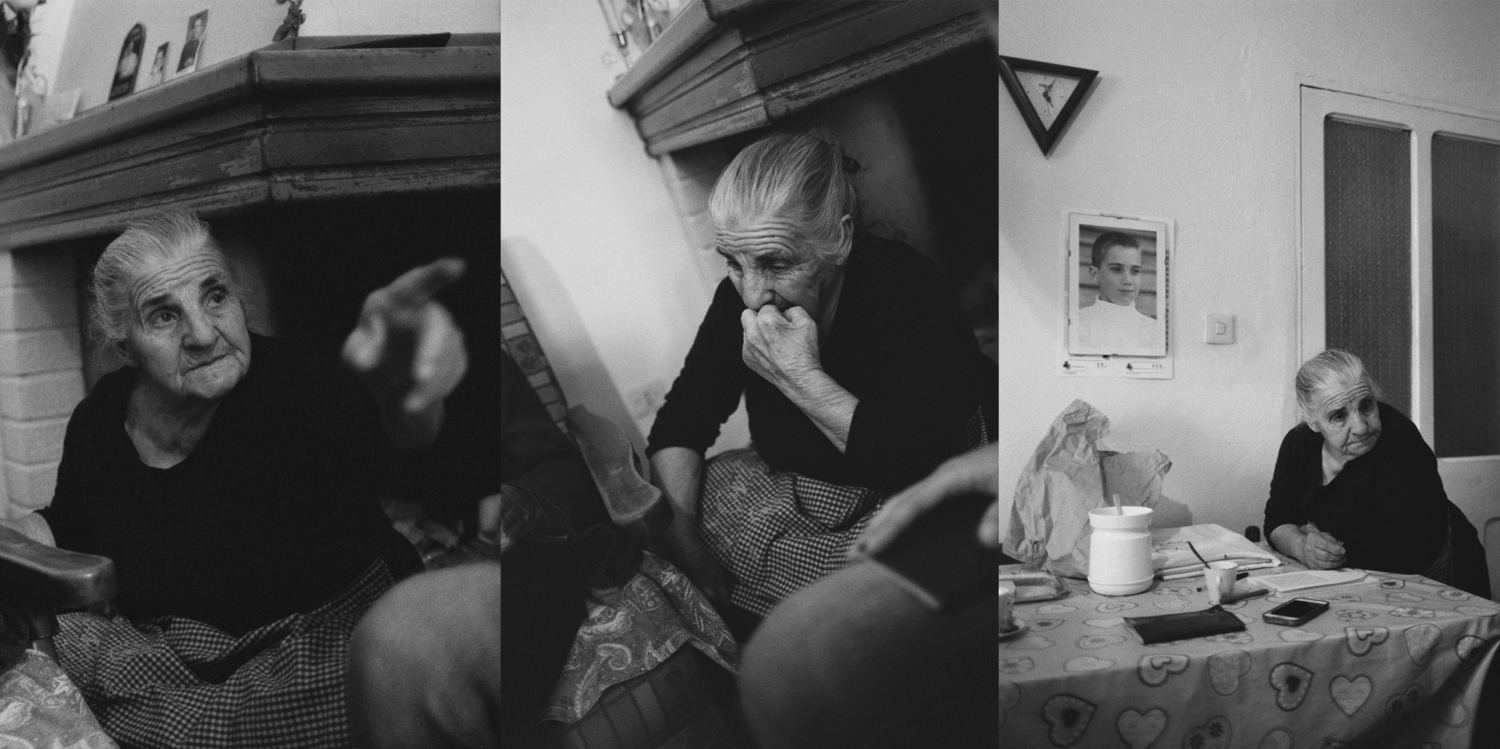Artist Blog
Every week an artist whose single image was published by Der Greif is given a platform in which to blog about contemporary photography.
On Preventable Causes of Death
Mar 30, 2020 - Ana Zibelnik
An excerpt from On Preventable Causes of Death, an essay written by Jaka Gercar about longevity politics. All the photos are from our 2017 trip to Perdasdefogu – a small village in the Nuoro region of Sardinia:
“It would be difficult to say we had a dialogue; we had some kind of rapport, but it was hardly a propositional one. Obviously, the prevailing reason for this was the language. The other his age. But he held my hand firmly, as did his wife, and many other anziani. The physical contact established an acute sense of togetherness, difficult to achieve in talking. Then there were the beautiful toothless expressions of tenderness. Ana took photos of Armando from the moment we’ve entered. Nearing our departure she leaned closer towards me to say she went through three rolls of film, yet it seems like Armando will have the exact same facial grimace on all of them.
Albert Camus famously wrote that there comes a point in life after which a man is no longer responsible for his face. For a young person, the face is a tool, an instrument with which to express him- or herself, the face is a means to gesticulate and therefore take on an identity. Persona, the Greek word for mask, from which the English word person evidently derives, is not opposed to the “true essence” of any individual being; it is precisely the necessary and only way one can establish his or her identity. A supple face is multifarious. Contrary, an unyielding face well past its prime begins to resemble only itself. It is thus forthright and far more revealing. Even Bob Dylan, who as a young musician was convinced that he wakes up as one person and goes to bed as another, cannot help becoming Bob Dylan more and more with every day gone by. The hardships and the worries, the laughter and the cries, the labour and the leisure – nothing escapes the face. The wrinkles, crinkles and rumples deepen, the cheekbones become more visible, the tics get predictable. There seems to be a perfectly analogous phenomenon happening in the domain of the mind. Armando did not only wear his heart on his sleeve, but also his convictions on his collar. Some of the questions I posed to him were deliberately vague and simple; others not so much. For instance, we talked about the importation of large quantities of wheat from Russia and Ukraine. But to all of my questions, it seemed, his daughter already knew the answer to. Sometimes she replied even before interpreting the question loudly into her father’s ear, assertively adding: “You’ll see, he will say the same.” She was right every single time.”





